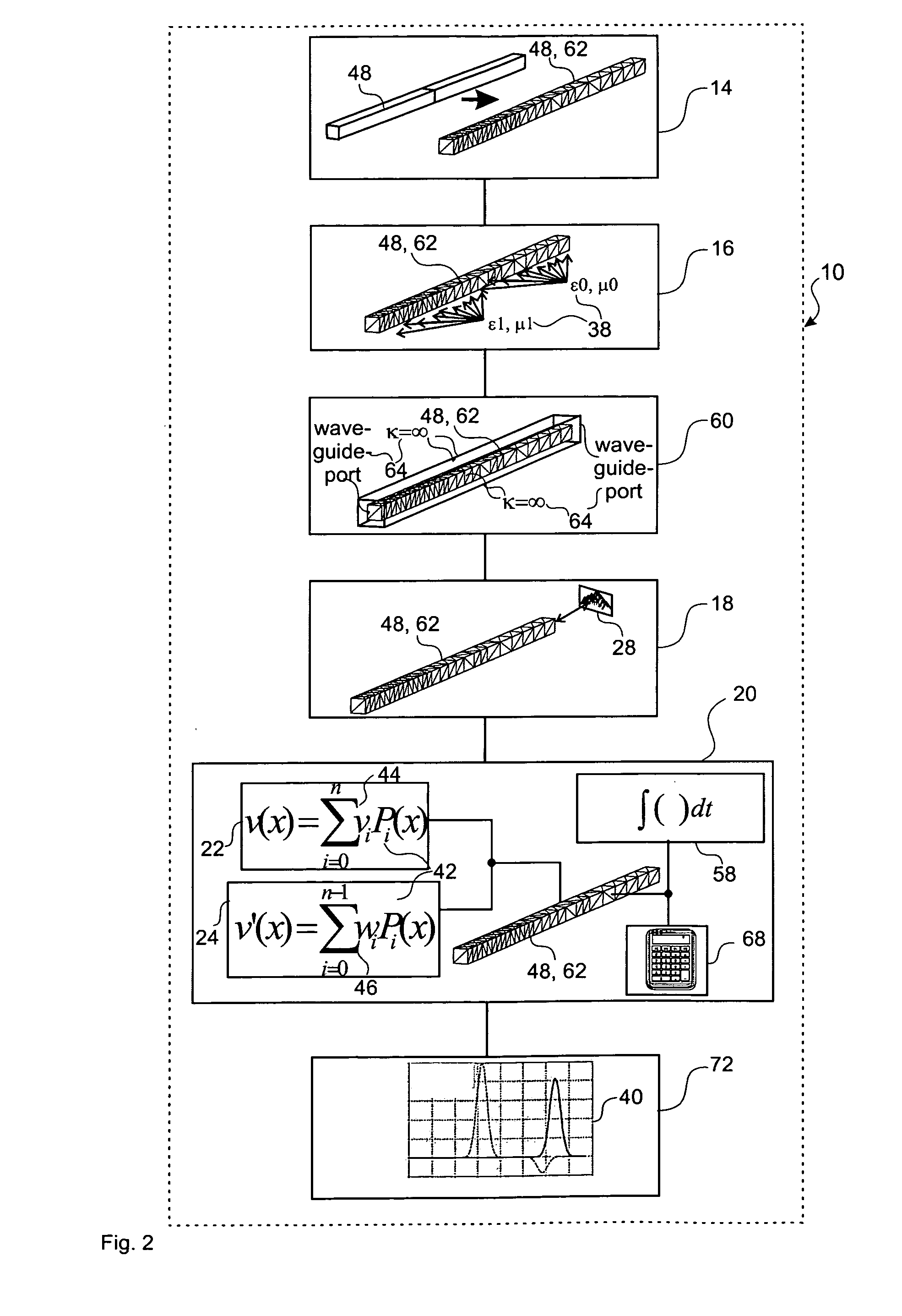Method, device and computer program product for determining an electromagnetic near-field of a field excitation source of an electrical system
- Summary
- Abstract
- Description
- Claims
- Application Information
AI Technical Summary
Benefits of technology
Problems solved by technology
Method used
Image
Examples
first embodiment
[0087]FIG. 1 a schematic flow chart of the method;
[0088]FIG. 2 a schematic block representation of a first embodiment of a device in accordance with the invention;
[0089]FIG. 3 error analyses during application of an embodiment of a method in accordance with the invention with Legendre polynomials up to degree 12 for resonance-analysis of a rectangular resonator;
[0090]FIG. 4 a convergence study of an eigenmode-analysis of a spherical resonator using an embodiment of the method in accordance with the invention with polynomials of polynomial degree 1 to 8;
[0091]FIG. 5 a rectangular wave guide of an electrical system with two different dielectric fillings and a tetrahedral discretization;
[0092]FIG. 6 a time domain result of a pulse reflexion of the waveguide shown in FIG. 5 using an embodiment of the method in accordance with the invention;
[0093]FIG. 7 a graph of magnitude and phase of a transmission parameter of an electrical mode propagating through the waveguide shown in FIG. 5 with ...
embodiment 10
[0111]FIG. 2 represents in a block diagram an embodiment 10 of a device for determining the near-field of an electrical system, where the field calculation unit 10 comprises a partitioning unit 14 for partitioning of an electrical system into individual grid cells, a material distribution unit 16 for assignment of a material distribution to the individual grid cells, a boundary condition unit 60 for definition of boundary conditions, a source unit 18 for definition of a field excitation source and a field determination unit 20 for determination of an electrical field, and a post-processing unit 72 for post-processing of derived quantities 40 from the results of the field calculation. The partitioning unit 14 provides a transformation of a waveguide 48 comprising two different dielectric materials ∈1, ∈2 into a domain under consideration 62, and discretizes the waveguide 48 by tetrahedral grid cells 52. In the downstream-connected material distribution unit 16, the individual tetrahe...
PUM
 Login to View More
Login to View More Abstract
Description
Claims
Application Information
 Login to View More
Login to View More - R&D
- Intellectual Property
- Life Sciences
- Materials
- Tech Scout
- Unparalleled Data Quality
- Higher Quality Content
- 60% Fewer Hallucinations
Browse by: Latest US Patents, China's latest patents, Technical Efficacy Thesaurus, Application Domain, Technology Topic, Popular Technical Reports.
© 2025 PatSnap. All rights reserved.Legal|Privacy policy|Modern Slavery Act Transparency Statement|Sitemap|About US| Contact US: help@patsnap.com



